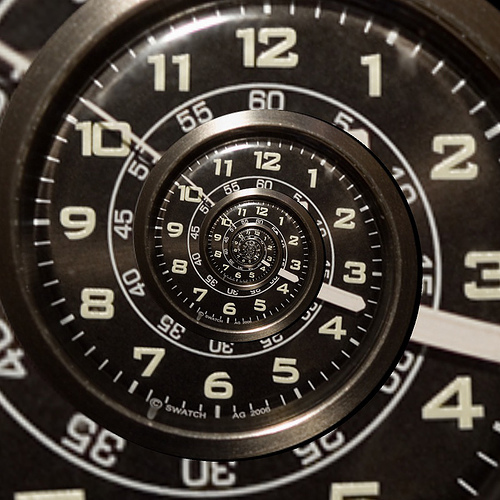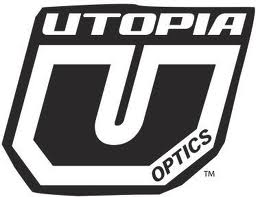|
LITR 5439 |
Literary & Historical Utopias: Model Assignments
Sample Essay 1 |
|
Katie Raney
A Return to Eden and Native American Roots: Common Themes in
Multicultural Utopias
Wondering whether the utopian drive really does exist in societies other than
the Western world, I decided to Google “Utopia + Japan” just to see what would
pop up. One of the searches that I explored was a blog in which someone was
describing Japan as a utopia; the main argument that they were utilizing was the
claim that Japan was a utopia because of the beauty and warmth of the ocean that
surrounded it. This instantly made me think of one of the common themes running
through our utopian literature: the idea that nature is a thing of abundant
productivity and beauty in a utopian society. This led me to examining Objective
3h which asks, “What
is utopia’s relation to time and history?” and “Does
the utopian society model itself on past, present, or future?” I
decided to examine this objective in regard to how nature is portrayed in some
of the multicultural works and Ecotopia
this semester to see if there really is a strong connection between the texts.
Not only did I discover that many of these works have an emphasis on the
richness of nature, I also saw a distinct link in how
Ecotopia is connected with Native
Americans specifically, focusing on objective 3i.
The primary way that these works are connected with one another is through the
idea that a utopian society emphasizes the return of the earth to perfection and
fruitful abundance. Written thousands of years ago, the book of
Genesis employs the idea of a fertile
earth along with several other texts that we have read this semester. In
Genesis 1, the Lord creates a
verdant, thriving garden in which He looks around and states, “it
[is] very good” (Genesis 1:31). Unfortunately, the land cannot sustain its
perfection for long, and this utopian vision quickly turns dystopian as Adam and
Eve sin against the Lord’s command. As a part of the punishment that Adam and
Eve assent for their sins, the earth loses this natural ability to thrive on its
own which is depicted when God says that the ground is “cursed” and that it will
now produce “thorns and thistles” (Genesis 3:17-18).
The once flourishing garden is now a place that must be worked with
“sweat” and “sorrow” (Genesis 3:17-19). Yet, the utopian garden is restored in
Revelation 22 when the “pure
river of water of life, clear as crystal” flows from the city which also
contains the “tree of life.” Here we see the idea of the restoration of this
original garden, an idea seen in other readings, as well.
Utopias seem to naturally gravitate towards the idea of restoring the earth to
the perfection that Genesis 1 and 2 describes. In Ovid’s
Metamorphosis, the earth
“produce[s] all things spontaneously” and displays “a season of everlasting
spring” (Ovid). This idea of eternal abundance for the earth is also presented
in Equiano’s narrative when discussing the land he was taken from describing it
as
“uncommonly rich and fruitful” producing “all kinds of vegetables in great
abundance.” Even in Hesiod’s work the earth is exhibited as “fruitful,”
and the land bears fruit “unforced” by human hands.
All of these descriptions seem to overlap with the idea in the Biblical
narrative, showing that despite the differences in time and culture, the vision
for a renewed earth exists.
Though the idea of the earth producing copiously is seen in these works, it is
also utilized in the utopian novel
Ecotopia. Several things in the
novel demonstrate the desire the Ecotopians have for the earth to thrive.
In the civilization, the Ecotopians move away from industrializing the
ground and its surroundings and desire for “the land [to be] returned to
grassland, forest, orchards, or gardens” (Callenbach 30). Additionally, “the
true love of the Ecotopians is their forests,” something that they are
constantly attempting to better.
Whenever Marissa and Will get together he notices how she begins muttering to
the trees, which he identifies as “a prayer of some kind,” illustrating their
devotion to nature, especially the trees (58). Ecotopians spend intense time
cultivating the land which is observed in the school where the kids take part in
tending to the gardens since the gardens “supply the food for the midday meals”
(127). Interestingly enough, the Ecotopians even admit that the earth will
“sustain itself on a steady-state basis – unless men come along and mess it up”
(34). This parallels closely to what occurred in the Garden of Eden, which
showed the earth as self-sustaining and prosperous until Adam and Eve sinned.
These texts seem to answer the questions
posed in objective 3h which asks, “What
is utopia’s relation to time and history?” and “Does
the utopian society model itself on past, present, or future?”
From these texts, readers can see these works are from several different time
periods and backgrounds all seem to contain the idea of the restoration of the
physical earth, making them strongly connected. They may even be modeled after
the oldest text of Genesis.
Multicultural influence is also seen in
Ecotopia in regard to the influence the Native Americans have on the
Ecotopian society. Objective
3i asks, “Are
utopias limited to Western Civilization, rationalism, and social engineering, or
may they exemplify multiculturalism?” One specific question taken from that
objective is: “If utopias or millennia are detected in non-Western texts or
traditions, are such terms appropriate, or do we simply project our identities
and values on cultures that are in fact doing something else altogether?” While
reading Ecotopia, one thing I noticed
is not how Callenbach intentionally crafted the Ecotopians to model the Native
Americans. In describing how their
Native American dead still walk among the land, Chief Seattle asserts that
“Our
dead never forget this beautiful world that
gave them being. They
still love its verdant valleys, its murmuring rivers, its magnificent mountains,
sequestered vales and verdant lined lakes and bays, and ever yearn in tender
fond affection over the lonely hearted living, and often return from the happy
hunting ground to visit, guide, console, and comfort them” (Seattle).
Here, he depicts how the Native Americans are connected to the land, and
he expresses the beauty and wonder of the earth itself.
This love for the land and the relationship with the earth that the Native
Americans display is an attitude that many citizens of Ecotopia also hold. When
Will first enters Ecotopia and is wondering about the time, some Ecotopians
respond that “You’d never catch an Indian wearing a watch,” and Will notes that
“many Ecotopians” are “sentimental about Indians” even envying them (31).
Furthermore, he believes that the Ecotopian clothing may even be “directly”
inspired by Indians (32). After meeting Marissa, Will documents that Marissa’s
name is “Brightcloud,” “a self-adopted Indian-inspired name,” which apparently
many Ecotopians have (54). He even
acknowledges that the Ecotopians must have felt “a little as the Indians must
have felt; that the horse and the teepee and the bow and arrow all sprang, like
the human being, from the womb of nature, organically” (51). All of these
examples reveal the multicultural connection between the two groups. The
language that Will employs even seems to parallel with something that Europeans
would have applied to Native Americans several years ago.
When describing some of their ceremonies, like the war games, Will says
that
they are “barbaric” and “tribal.” In addition to this, after waking up from a
dream in which he was participating in the war games, he writes that the
Ecotopians are “savages!” (83). However, this opinion of them will not last as
he makes his conversion of becoming one of them, even entering into the war
games himself.
From these examples, it seems that Callenbach is not trying to project Ecotopian
culture on the Native Americans but rather Native American culture on the
Ecotopians.
In conclusion, multicultural texts seem pivotal to demonstrating how the
utopian drive has existed in cultures throughout time. They seem to parallel one
another in the idea that there should be a return Eden and the abundance
fertility of the land. To quote
Bryon Smith from 2005, “it does seem that utopias, in order to be utopias, must
be ecotopias to some extent.” The idea of the earth being restored to its
original beauty and fertility has corresponded with so many of our readings.
Also, though some Western texts may try to force their definitions and culture
onto others, in Ecotopia, readers can
see that this really is not happening, at least with the work
Ecotopia.
If anything, Callenbach is relying on the historical background of the
Native Americans for inspiration. He calls upon their history and connection
with the land to create his fictional society.
Overall, these multicultural works have enriched the learning
experiencing in providing a frame of works to show that the utopian drive goes
beyond Western civilization.


